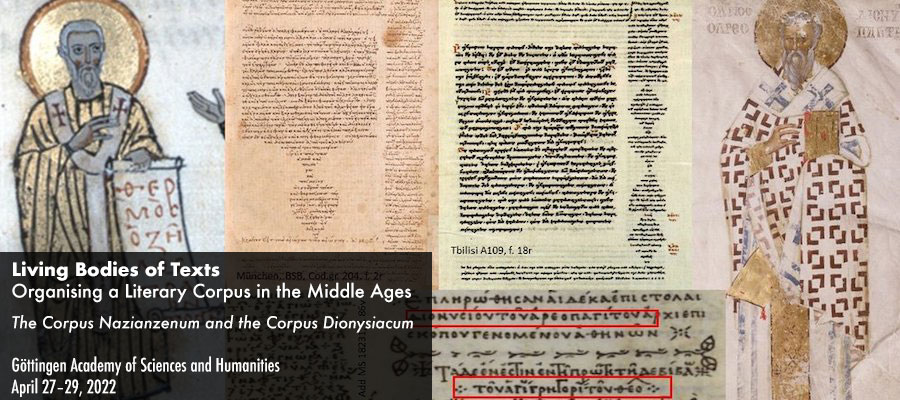Living Bodies of Texts: Organising a Literary Corpus in the Middle Ages, The Corpus Nazianzenum and the Corpus Dionysiacum, Göttingen Academy of Sciences and Humanities, April 27–29, 2022
Through the very word ‘corpus’, the metaphor of the ‘body’ is applied to a group of works by the same author that are transmitted together. These works not only share the same ‘skin’ (the binding) but also function organically thanks to a complex system of different paracontents (titles, scholia, glosses, marginal signs, commentaries, author’s biographies, illustrations, tables of contents…). When a corpus is ‘edited’ anew in its original language, or translated into another language, the ‘organs’ (the contents) are transplanted into a new ‘body’, with its own autonomous life.
In the case of only very few medieval authors is it possible to see this system at work such as in the case of the Corpus Nazianzenum and the Corpus Dionysiacum. In many ways both Gregory Nazianzen and Dionysius the Areopagite are ‘super-authors’, who forged their own literary identity as much as they shaped a closed and limited body of writings and prepared it for posterity. This common feature of both corpora sets them apart from other gatherings of patristic works, which were often much larger and not so well defined from the beginning. Neither Gregory nor Dionysius could foresee, however, that a growing apparatus of paracontents would become inseparable from their work. Amongst the early Byzantine writers, Gregory and Dionysius were at the same time the most celebrated and the most difficult to understand, as we see especially in the (early) medieval translations that made their works available to Arabic, Armenian, Georgian, Latin, Slavonic or Syriac audiences. Their multilingual corpora of texts were glossed, annotated and commented upon continuously, giving rise to an ever growing ‘exoskeleton’, which sometimes superseded or even obliterated the actual ‘body’ on which it was built.
Advance registration required.
